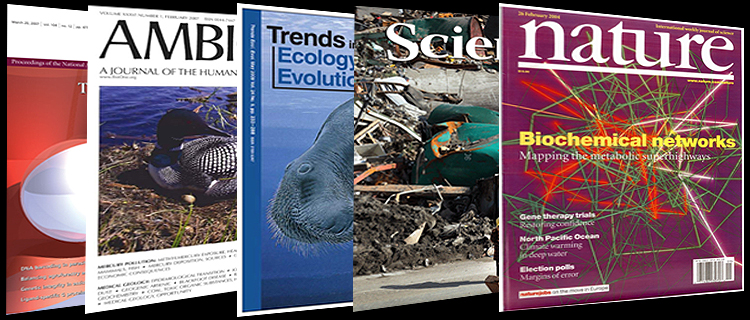
Publications
Here you can find the original articles behind the research along with related publications
Download supplementary information Pdf, 425.1 kB.
Pdf, 425.1 kB.
Read Nature feature article and special Planetary Boundaries section
Other publications on the boundaries concept:
Rockström, J., Karlberg, L., 2010. The Quadruple Squeeze: Defining the safe operating space for freshwater use to achieve a triply green revolution in the Anthropocene. Ambio 39:257-265
Foley, J.A., Ramankutty, N., Brauman, K. A., Rockström, J. et al. (2011) Solutions for a cultivated planet. Nature 478 337-342.
Cornell, S. 2012. On the system properties of the planetary boundaries. Ecology and Society 17(1): r2. www.ecologyandsociety.org/vol17/iss1/resp2
Carpenter, S. and Bennett, E. 2011. Reconsideration of the planetary boundary for phosphorus. Environmental Research Letters 6 (2011) 014009.
Ingram, J. 2011. A food systems approach to researching food security and its interactions with global environmental change. Food Security (2011) 3:417—431
Erb, K-H., Haberl, H., DeFries, R., Ellis, E., Krausmann, F., Verburg, P.H. 2012. Pushing the Planetary Boundaries. cience 14 December 2012: 1419-1420. [DOI:10.1126/science.338.6113.1419-d]
On governance within planetary boundaries:
Folke, C. and Rockström, J. (2011) 3rd Nobel Laureate Symposium on Global Sustainability: transforming the world in an era of global change. Ambio 40 717-718
Galaz, V. et.al. Planetary boundaries — exploring the challenges for global environmental governance. Curr. Opin. Environ. Sustain (2012), doi: 10.1016/j.cosust.2012.01.006
On characterizing the Anthropocene:
Steffen, W., Persson, A., Deutsch, L., Rockström, J. et al. (2011) The Anthropocene: from global change to planetary boundaries. Ambio 40 739-761.
Folke, C., Jansson, A., Rockström, J. et al. (2011) Reconnecting to the biosphere. Ambio 40 719-738
LATEST NEWS
-
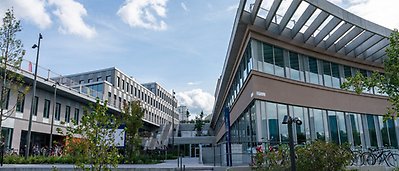
General news | 2024-04-18
Centre research listed among top ten of most cited papers in policy
Three scientific works with heavy involvement from the Stockholm Resilience Centre have been included on a list of the ten most cited non-economics papers in policy documents by Nature
-

General news | 2024-04-10
Centre receives extended funding from Mistra for food research
The research programme Mistra Food Futures, in which the Centre is a partner, receives SEK 64 million for the upcoming four and a half years
-

Educational news | 2024-04-09
New planetary boundary game bridges education and climate action
A new innovative computer game lets Danish school children learn about key research on planetary boundaries
-
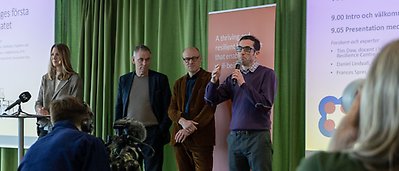
General news | 2024-03-08
First Swedish national citizens’ assembly on climate kicks off
How should Sweden lower its emissions to be in line with the Paris Agreement? This question is at the core as Sweden’s first national citizens’ assembly on climate starts on 9 March 2024
-
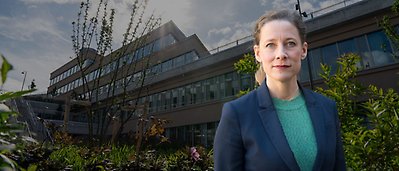
General news | 2024-03-08
Lisen Schultz listed as one of the most influential women in business in Sweden
Centre deputy director Lisen Schultz, director of the Executive Programme on Resilience Thinking, has been included on the list of most influential women within the Swedish business sector
-

General news | 2024-02-29
Johan Rockström awarded the Tyler Prize
Johan Rockström, professor and former director at Stockholm Resilience Centre at Stockholm University, now leading the University of Potsdam Institute for Climate Research, has received the world's top environmental prize.




